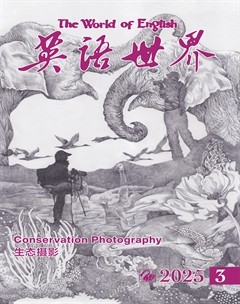They were dismissed as paper jokes, the pictorial maunderings of an old man—but the dazzlingly bright cutouts1 Matisse made in his last decade show a period of vitality and radical reinvention.
马蒂斯在生命最后十年创作的剪纸作品在当时颇受轻视,人们认为那是拿纸剪着玩,不过是耄耋老人用图画形式在絮絮叨叨。而事实上,这些作品色彩明亮,令人叹为观止,足以看出马蒂斯在那段时期爆发出蓬勃的生命力,对传统进行了彻底的颠覆。
At the start of the second world war, Henri Matisse found himself, for the first time in his life, confronted by an empty studio. France declared war in September and was swiftly invaded, defeated and occupied by German forces. Matisse fell gravely ill and spent much of the next two years struggling to survive recurrent crises that threatened his life. In 1943, when German armies poured down through France to meet allied forces fighting their way up through Italy, Matisse was a bedridden invalid2, living in a war zone in south-east France with German troops in his basement and allied shells exploding in the garden.
二战爆发初期,马蒂斯的工作室空空如也,没有一件作品,这是他生平第一次遇到这种情况。同年九月,法国参战,旋即遭到入侵,随即战败,迅速被德军占领。此时,马蒂斯身患重疾,之后的两年,病情反复,几度病危,他大部分时间都在经历这样的煎熬。1943年,德国大军横贯法国大陆,与穿过意大利奋力一搏的盟军短兵相接。彼时,马蒂斯缠绵病榻,住在法国东南部的一个战区,寓所地窖中住着德军,盟军发射过来的炮弹就在花园爆炸。
It was at this point that he cut a man out of white paper, a drooping pinheaded figure, all sagging limbs and blazing red heart, mounted on a black ground with bombs detonating around him. He called it The Fall of Icarus, after the ancient Greek who fell to his death because he had tried to fly too near the sun, but Matisse’s Icarus marked a beginning, not an end. It turned out to be the first step in a process of radical reinvention that would see him abandon oil paints altogether in favour of new techniques based on cut and painted paper. His doctors had given him, at most, three years to live after an intestinal operation in 1941. His mobility from then on was minimal and his strength greatly diminished, but the work he produced in his final decade suggests inexhaustible imaginative power and vitality. He made an astonishing number of increasingly ambitious cutpaper compositions, setting up a production line after the war in what he called his factory in Nice, where studio assistants covered sheets of paper with gouache mixed to his own direction in colours almost blindingly bright. He said he was drawing with scissors, cutting directly into colour, abolishing the conflicts—between colour and line, emotion and execution3 —that had slowed him down all his life. “I do it in self-defence,” he said sadly, when Louis Aragon asked how work of such brilliant, reckless exuberance could have emerged from the darkest days of the war.
正是在这一阶段,马蒂斯在白纸上剪出一个人形:耷拉着小脑袋,四肢下垂,还有一颗火红的心。小人嵌在黑色背景中,周围是引爆的炸弹。马蒂斯以古希腊神话故事《伊卡洛斯的坠落》为这幅画命名——伊卡洛斯因为飞近太阳而坠亡。不过与这个传说不同,马蒂斯的《伊卡洛斯》象征的不是终结,而是开端。马蒂斯最后完全放弃油画,转向将裁剪和涂色纸相结合的创新手法,由此开启一段彻底的革新之旅,而这幅作品就是他迈出的第一步。1941年,马蒂斯接受了一次肠道手术,医生当时断言他活不过三年。虽然手术后行动能力大为受限,体力严重下降,但马蒂斯在生命最后十年间的创作表明,他的想象力和生命力永不枯竭。





